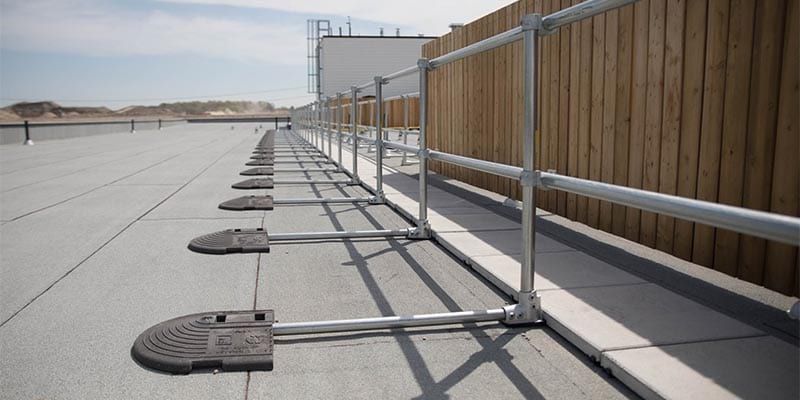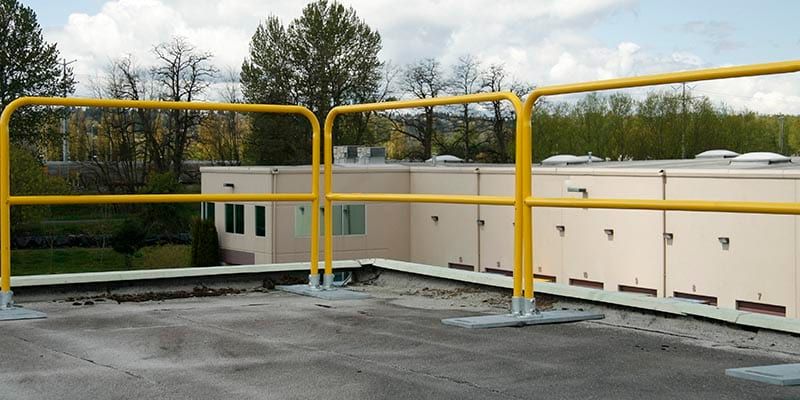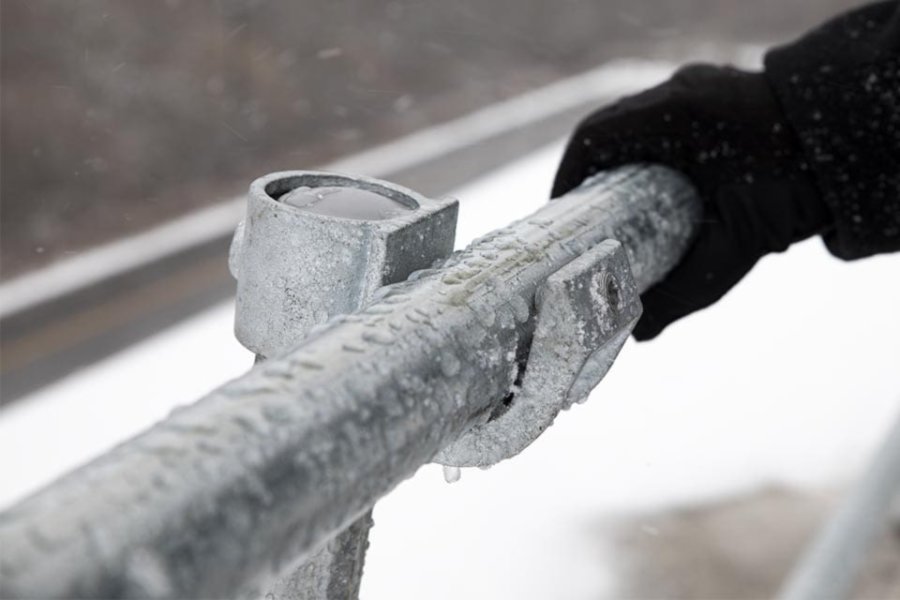5 Things To Consider When Buying Guardrail

You have decided that a guardrail is a viable solution to whatever problem you're facing right now. So, you do what everyone does when they need something. You Google it. Then you find out that there are so many options available to you. Steel. Aluminum. Welded. Non-penetrating. Chain-link. The options go on. With all of this in front of you, how do you make the right choice?
You're in the right place. We'll go over five things that you should consider while you make this decision. This is not an exhaustive list. These are the most common factors that I have seen in the past 9 years. They are:
- What do you need the guardrail for?
- Where do you need the guardrail?
- How long do you need the guardrail to last?
- What codes apply to your guardrail?
- How do you want the guardrail to look?
1. What do you need the guardrail for?
It's a simple question, but an important one. There are a few factors that will change the type of guardrail that you need.
If you need the guardrail for protection, then you need to make sure that the guardrail meets the standards local to you, like OSHA or Ontario Building Code. The type of protection that you need would also change the guardrail you want. I would use a 1-1/2" pipe-style guardrail for fall protection. However, I would want a more robust barrier system if I were trying to protect people from forklift traffic. If you need it to act as a more robust warning line, then the requirements are easier to manage.

Then you need to consider if the guardrail is going to be temporary or permanent. It's important to note that temporary and non-penetrating are not synonymous when it comes to guardrails. More on this later. If you plan on taking the guardrail down when the work is done, then you want to focus on temporary guardrails like a parapet clamp guardrail or this non-penetrating temporary guardrail. If you want the guardrail to remain in place so that the working or walking surface is always protected, then you want a system designed to remain in place. A parapet railing is designed to mount to an available parapet wall.
2. Where is the guardrail going?
The most common location that we see is a rooftop. Other potential locations include a mezzanine, a dock, or inside a warehouse. Each of these locations has its own set of considerations that would change the guardrail that you choose. Let's review the most common location that I mentioned.
The material of your roof will influence whether you want to mount a guardrail or just set something on top of it. This is where that non-penetrating term that I mentioned earlier comes back. A non-penetrating guardrail is designed to remain in place without needing to attach to the structure of the building. The KeeGuard Rooftop Guardrail is a perfect example of this. If you have a roof warranty, you don't want to lose it by poking holes in the roof. If you don't have a roof warranty, then you don't want to exasperate potential roof leaks by poking holes in the roof.

Weather plays a role in the system that you choose. Snow and heavy rain will eat at the material if you don't choose carefully. If you live in a windy area, then you'll want to make sure that any system is designed to meet your local requirements. Make sure that you take this into account so that you don't have a guardrail flying off your roof and damaging equipment or, more importantly, putting lives at risk.
3. How long do you need the guardrail to last?
You may think this is a silly question, but I see the answer to this ignored more often than you realize. Think back on a time that you bought something that was much cheaper than a name-brand counterpart that is known for longevity. It works for a bit, and you think of all the suckers that spent the extra money. Then it breaks in a month. So, you buy a different knock off thinking that it will be better this time. It's not. Eventually, you spend more than you would have to buy the correct item and use it for significantly less time. This doesn't include all the aggravation of waiting for the new item after all the time spent trying to fix the first one(s).Guardrail is not immune to this problem. Some options are considered temporary and get used for permanent solutions just because they are cheaper. Those savings come at a cost. Powder-coated steel is not going to last as long as galvanized steel, and you will find yourself having to replace the railing sooner than you expect. Welding has pros and cons as well. The weld points will be an area of accelerated corrosion despite galvanization.
If you only need it for a year or two, then buying a lower-quality option may make sense. However, if you want something that is going to protect people long after you've left the company, then you need to stop and ask yourself if the option you're considering will do just that.
Don't forget that capital depreciation (how many years the system will retain value - often before needing to be replaced) is something that your budget planners will be thinking of as well. You should too if you want a better chance of getting your projects approved.
4. What codes apply to your guardrail?
I have found a lack of understanding most often in this area. It's easy to think that OSHA (in the USA) is the only code that applies, which makes sense. It's talked about a lot and sets the minimum standard for safety that employers are required to provide. So, what else could there be?
Local building codes will have their own requirements. This will depend on the location of mechanical units and roof hatches, as an example. Also, who is gaining access to the roof will affect the strength requirements and design of the guardrail. For instance, if you have the public gaining access to your roof, then you need to provide a guardrail in which a sphere of 4" cannot pass through at any point.
I worked with a solar installer who needed to have 5' of open clearance all the way around the solar array in order to comply with the fire code. So, whether it's Ontario Building Code in Canada or the Cal OSHA in California, make sure you've taken the time to understand what codes are going to apply to your project.
5. How do you want the guardrail to look?
"But, Mr. Safety Professional, why does the look of guardrail matter if safety is the only important thing?" I'm glad you asked! It is important to make sure that the guardrail you choose is appropriate to your location and maintains the correct safety parameters. However, compliance is not the only element to an appropriate solution.
Branding is important to the success of a company. If you have a professional building with glass windows and a bright yellow eyesore of a guardrail on the roof, then you tend to send mixed signals on what's important to you. Often the color of the guardrail will set the tone of the environment. For instance, yellow is often connected to construction and it can give off that feel to visitors at your facility. The industrial look has become more popular over the years, making a galvanized finish more appealing.
Color isn't the only aesthetic. Do you like the welded look? Welding comes with its own pros and cons, and you'll have to consider that when choosing. A lot of construction rails are sold in panels, which will have gaps and show a less cohesive system. Maybe you like that. Or maybe you prefer to have a guardrail that looks like one solid and continuous piece.
Aesthetics isn't just about making things pretty, though. You may want that bright yellow finish on the roof because you want to make sure that the guardrail is visible from far away. The continuous look of a guardrail could be used to dissuade a contractor from trying to take it apart.
Whatever the reasons, make sure that you consider this as you make your choice.
Choosing the right guardrail can be more involved than the project may initially expect. Now you know some of the important things to consider as you pursue a safe and healthy work environment.
Need help? We have a team of professionals that can help you sort through each of these questions to find the right solution for you.



